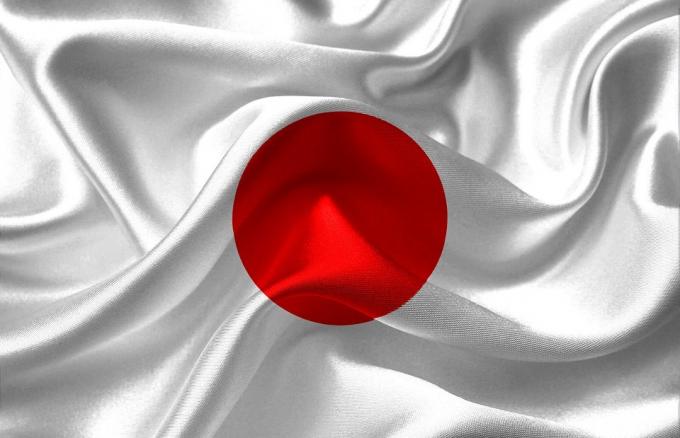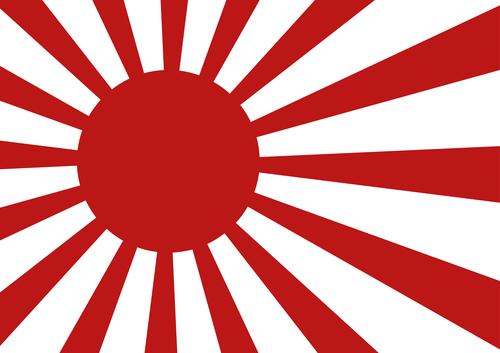The flag of Japan is officially called Nisshōki, but it is popularly known as Hinomaru, which means "sun circle". It's a simple flag compared to other countries: a white rectangle with a circle in crimson (color similar to red) in the middle. White represents honesty and purity and red passion and sincerity.
There is a belief that the flag is a tribute to the Amasterasu, who is the sun goddess in Japanese mythology, her name means "she who lights up the sky".
The size of the flag must follow a 2:3 ratio, that is, if it is three meters long, it must be two meters high. The circle must be positioned exactly in the middle and its diameter must be the equivalent of three fifths of the vertical measurement.

Japan Flag History
Hinomaru it has been used as the flag of Japan since 1870, when it became the official flag of Japanese commercial vessels. In 1870, the country was going through the Era Meiji, which was the period of unification of Japan around the Emperor of the same name and lasted from 1868 to 1912. However, the symbol of Hinomaru it was used centuries ago.
In the twelfth century, for example, there were already records of the use of the image. In the fights between clans minamoto and Taira, the warriors drew red circles on their fans, also known as gunsen.

Later, in the 15th and 16th centuries, Hinomaru began to be used by ships sent abroad - the flag was a way of communicating to other vessels that those ships were Japanese.
The white flag with a crimson circle was made official for use on commercial ships in 1870 and 1872 it began to be also placed in government buildings and used in celebrations in the parents.
Since then, the Hinomaru it was used as the flag of Japan, but it was not until August 9, 1999 that it was made official by the Japanese government, with the enactment of the Law on the Flag and National Anthem.
Today the Hinomaru it is used in commemorative ceremonies and receptions of foreign official leaders. It is a symbol of patriotism and can also be seen on the exterior of homes in Japan.
The Flag of the Rising Sun
The flag of the rising sun - Kyokujitsu in Japanese - it resembles the official flag of Japan, but has its circle off-center and 16 stripes come out that represent the rays of the sun.

This flag was used by the Japanese Armed Forces, in particular, by the Imperial Navy, between 1889 and 1945 - the end of World War II. It is a symbol of Japan's expansionist policy during the 19th century, when the country threw itself overboard to conquer new territories.
During these conquests, the Japanese army committed atrocities, such as the mass murder in the Chinese city of Nanjing in 1938. This made the rising sun flag associated with a negative image among the Japanese and neighboring nations, having been banned by the Treaty of San Francisco in 1951.
It was adopted again in 1954 and is now the flag of Japan's Maritime Self-Defense Force. Despite this, there is controversy about the use of this flag, as some Koreans, Chinese and relatives of victims of the Japanese army, consider its use offensive.
See also the meaning of Argentina flag and Italian flag.
